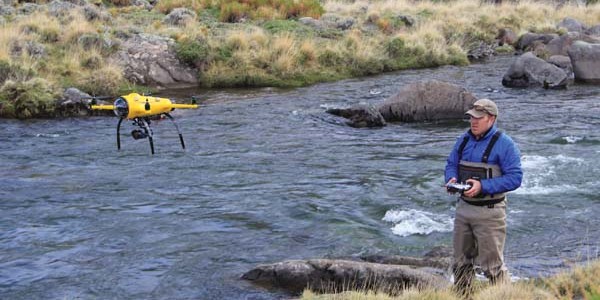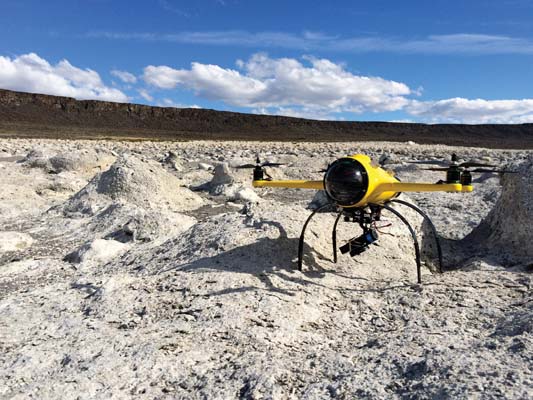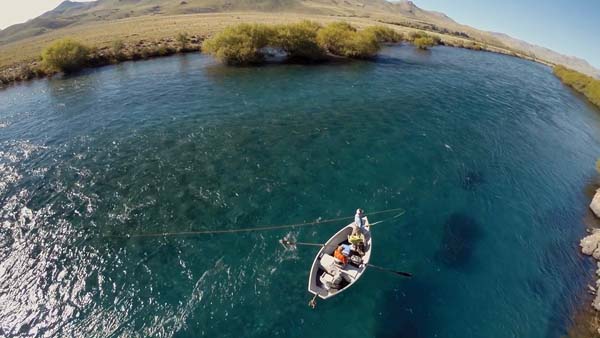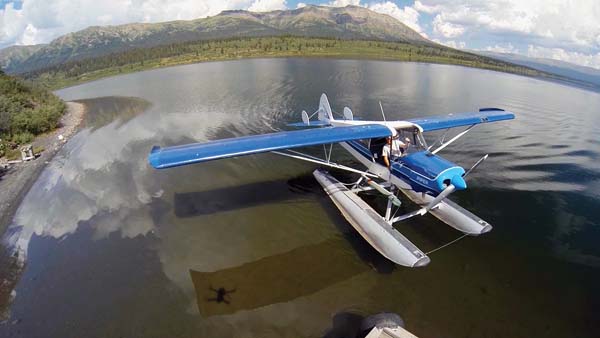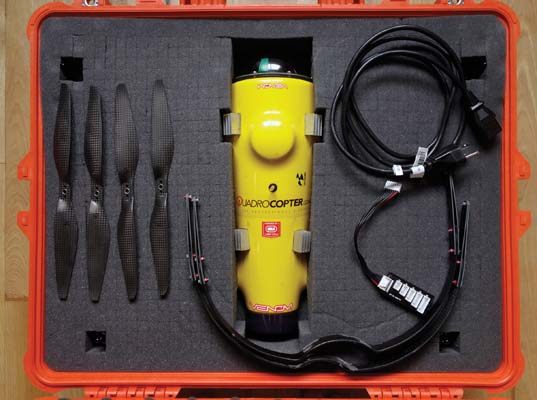Remote adventures with a rotordrone
Whether Todd Moen is in the backcountry of his native Oregon or in the wilds of Argentina, capturing the thrills and spills of fly-fishermen and their catch, he relies on a rotordrone equipped with a video camera to get up close to the action. Todd’s online publication, Catch Magazine, showcases the art and entertainment of the fishing industry. He notes, “I’ve heard a lot of folks call the magazine their virtual vacation!” Todd’s main sponsor, the outdoor clothing brand Patagonia, enables him to travel to exotic wilderness spots across the globe, and he says that the multirotor takes his camera work to the next level. We caught up with Todd to find out what’s involved with traveling around the world with a rotordrone
Above: Todd Moen travels with his QuadH2o rotodrone to remote rivers, lakes and waters all over the world, so a complete waterproof setup is essential. To see his videos, go to catchmagazine.net and toddmoencreative.com
How did you get involved with multirotors?
My work as a fly-fishing videographer takes me to rivers and wide-open spaces all around the world. To capture a bird’s-eye-view of the rivers and the anglers I film, I was always trying to find the highest landmark from which to shoot. With loads of gear, a tripod and my video camera, that wasn’t easy. Then about three years ago, my friend Jim James from Averticalview in Redmond, OR, introduced me to custom carbon-fiber multirotor frames he cut from scratch with his company’s CNC machine. I was hooked, and a few years later I designed my own frame for him to cut. I found a few other frames I could use abroad, and the rest is history!
Where have you traveled with them?
I’ve filmed all over the U.S. with my custom machine. Now I have a reliable waterproof frame that allows me to travel all over the world. I use a custom Pelican case that fits my gear perfectly. Last summer, I had a very successful trip to the far north of British Columbia, where I captured video I have never seen on film or experienced before: Anglers were hooking huge trout on the fly while I filmed the fish from an aerial perspective as they rose to the surface water to eat dry flies. My most impressive trip with a multirotor was to Argentina’s Patagonia region. I knew I was taking a big gamble with my gear: this is one of the windiest places on earth! I kept the Pelican case at my side while traveling on a 4-wheeler for days, getting bumped around looking for remote rivers and streams. When the wind died down, I was able to capture bird’s-eye aerials of a remote and wind-stricken place that has probably never been seen by anything but real birds. It was very nerve-racking, but it all turned out.
What are your favorite aircraft and camera setups?
I have two favorites for a few different reasons. First, I designed a frame myself a few years ago and still use it for heavier lifting. It’s a quad frame that carries a two-axis brushless gimbal and a fully loaded FPV setup. It’s powered by two side-by-side Venom 6S 5000mAh 25C LiPo packs, which give me over 20 minutes of runtime. The gimbal carries a Sony RX100, which does a fantastic job for its size and weight. This is probably as big as I’ll go. This setup is what I’m most proud of since I designed it, built it from scratch and know it from inside out. I work around water 90% of the time and I always wished I could land in the water if things went haywire. Then I found the QuadH2o fiberglass quadcopter frames that were just the ticket. Today, this is my go-to machine for traveling around the globe. It’s just the right size for the no. 1600 Pelican case, which can also carry my Spektrum DX8 and Venom Pro 2 LiPo charger safe and sound. With this machine, I have a few different options as it’s only capable of flying with a GoPro-size camera. For bad weather conditions and if I do want to land in the water, I can attach the GoPro in its waterproof housing. For most of my work I use a small two-axis gimbal under the frame with special GoPro filter attachments that reduce glare and slow down the shutter speed to reduce image vibration. Since this is my go-to ship, I carry three Venom 4S 5000mAh flight packs that fit inside the frame. They are always charged and ready.
Any tips for traveling abroad with a multirotor?
Traveling with these machines is more of a mind game than anything. You just have to make sure you’re ready at any moment for security to start asking questions about Lithium Polymer [LiPo] batteries. For example, in Canada I was asked how many watt-hours each LiPo pack had. Lucky this was my first trip through customs, and I had the paperwork printed out from the airline’s website stating its battery rules. Each single battery has to be below 100 watt-hours to be allowed on airlines. All of the LiPo packs I use for my travel setup are below this, but the security people don’t know this. A major key to making a trip a much better experience is to bring batteries that display all of their information on the label.
Todd’s Top Travel Tips
Never check your LiPo batteries. They always have to be carried in your personal carry-on.
Make sure your batteries are individually stored in clear plastic zip-top bags with the plugs covered in electrical tape to ensure they don’t short out.
Never take a fully charged pack on board. Keep your battery at a safer level of 3.7 volts per cell just in case it has a problem and shorts or puffs.
Keep batteries easily accessible and always pull them out to show the screening workers.
Check the airlines every time you travel, as the rules are constantly changing and your batteries can easily be taken away in seconds if you haven’t done your homework.
Always have some sort of lightweight landing pad handy. I use a photo disc or reflector for landing and taking off, as many times I’m in sand or surrounded my small pebbles of gravel that can be thrown up in the propwash and nick a blade.
Make sure your travel case can take serious abuse! Be sure the aircraft is completely surrounded by foam because the baggage handlers can be rough on your gear.
By: Debra Cleghorn
Photos courtesy of: Todd Moen


